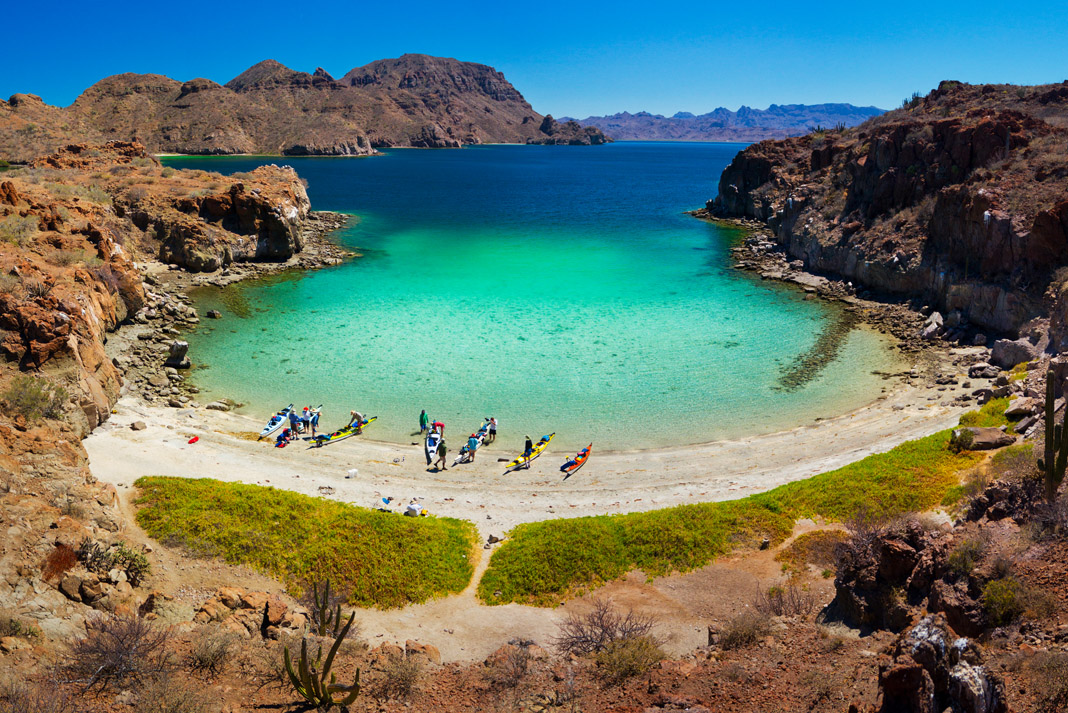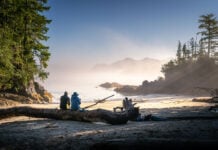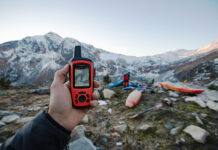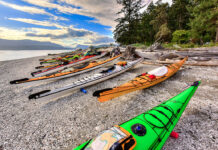We open Antonio’s van and a mountain of gear disgorges itself. Stinky sprayskirts, leftover food, sandy tents, water bags and kitchen gear from 11 people for 10 days on the west coast of Mexico’s Baja Peninsula. We throw it in a pile and eat dinner.
The next day a small army descends on the patio. Carlos leads a systematic washing, drying and re-sorting of every pump, cockpit cover and drybag. Isabel sorts and stows leftover food and kitchen gear. Idalia cleans kayaks, carefully noting every gelcoat ding to be repaired later. Rapid-fire Spanish flies across the patio. Marcos uses gestures to show the sole gringo—that’s me—his system for washing, drying and storing gear. The people flitting about the Loreto-based shared house and kayaking nerve center all have jobs guiding, coaching, managing equipment, tracking rentals and keeping the website and social media of this small locally owned and operated business running.
Only one of the employees is the classic itinerant young sea kayak guide hopping between seasonal stints in Baja, Alaska and the Pacific Northwest. The other 13 are locals with deep ties here.
This means their money—and their love of place—sticks around.
If you want to preserve wild coasts to paddle, follow those paychecks
We didn’t see any other kayaks in Magdalena Bay on our 10-day trip. It’s dominated by a deepwater port and commercial fishing, with a few whale watching tours thrown in. We saw commercial fishermen in pangas and monstrous fishing hulks with onboard helicopters. What should have been ideal beach camps were awash in discarded fishing gear and crab traps, as well as the odd sea turtle skeleton.
Marcos hopes kayaking will one day bring more environmental stewardship to this area where he grew up.
Outdoor lovers and environmentalists have long seen ecotourism as a way to reframe the tired zero-sum debate between preserving wild places and generating jobs. If a community can sustain itself through paddling, surfing or climbing—instead of logging or mining—governments are more likely to see value in those wild places and safeguard them. Costa Rica is an often trotted example. Moab, Utah is another success story—a uranium-mining town in the ’80s and now the outdoorsy capital of Utah red rock.
The economic impact of outdoor recreation is enormous, but decentralized. Despite outdoor recreation consumers contributing $887 billion to the American economy in 2016, it’s hard to convince policymakers and locals alike of the economic magnitude of many tiny transactions, like a tank of gas and a meal on the way to the put-in. However slowly, the tide is turning in our favor.
Oregon just created a statewide Office of Outdoor Recreation. The Outdoor Retailer trade show moved from Utah to Colorado in protest over Utah’s environmental policies, taking $45 million with it.
The 11 kayaks plying Baja’s Magdalena Bay is a long way from there, but it paid for Antonio to shuttle us over the Sierra Giganta and back, and for hotels and meals in San Carlos, and a support panga.
Hopefully, our trip sent out a few ripples toward preserving Magdalena Bay too
As I cleaned gear, a story from a conservation colleague in Portland came to mind. In a committee hearing about clean water regulations, employees from nurseries growing native plants for restoring natural areas showed up. They could have talked about how they cherished wild places and clean water but they didn’t.
Instead, they said they had good jobs restoring the environment, and clean water regulations were essential to keeping these jobs. Politicians—who had heard the old environmental debates a million times—suddenly perked up. When Marcos, Carlos and Isabel describe what they do and why, they can talk the same way. When Deep Throat said to follow the money, he was right.
Neil Schulman has followed the money—figuratively, if not literally—during two decades of conservation work in the Pacific Northwest.








